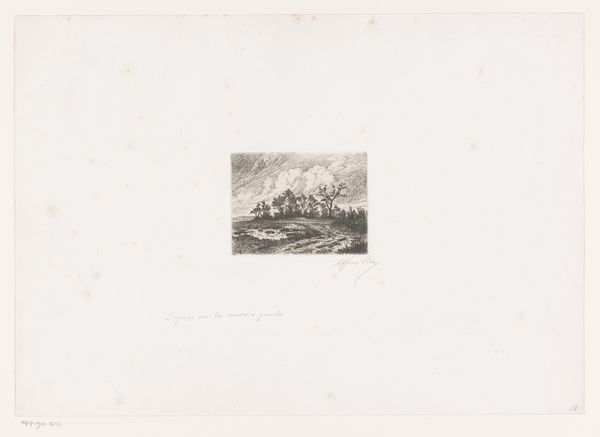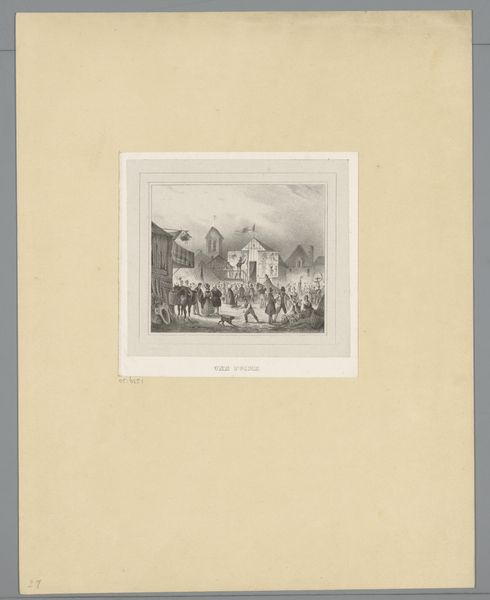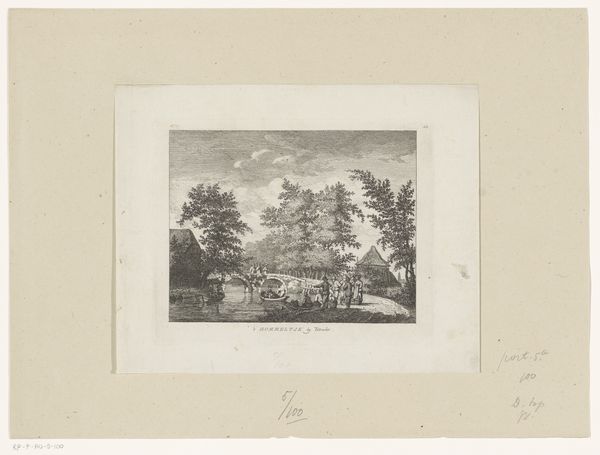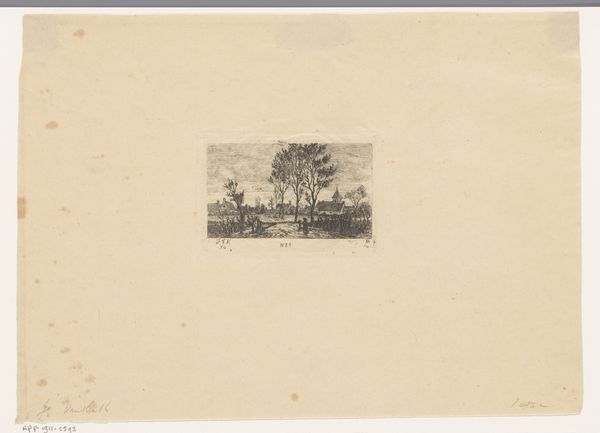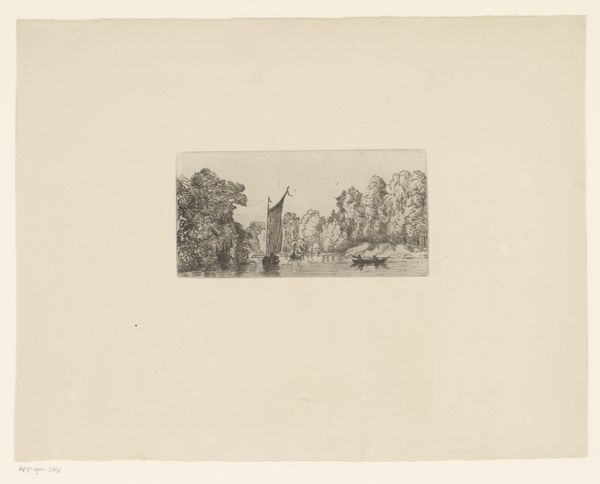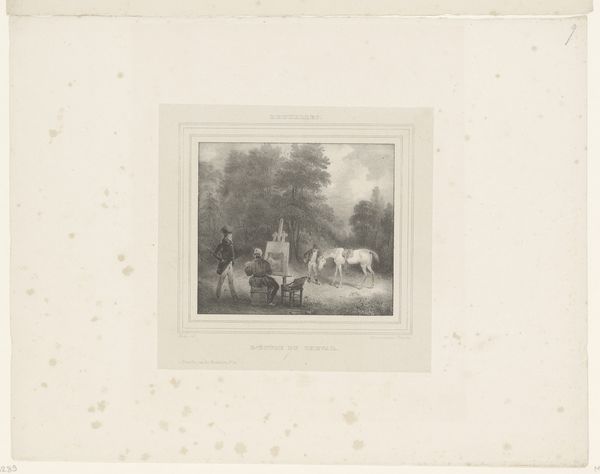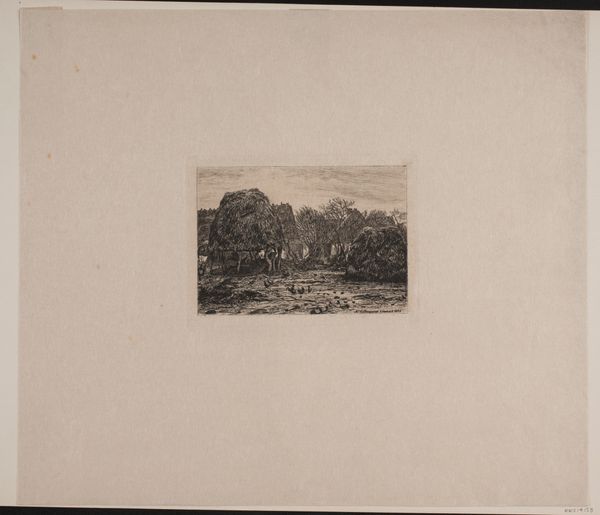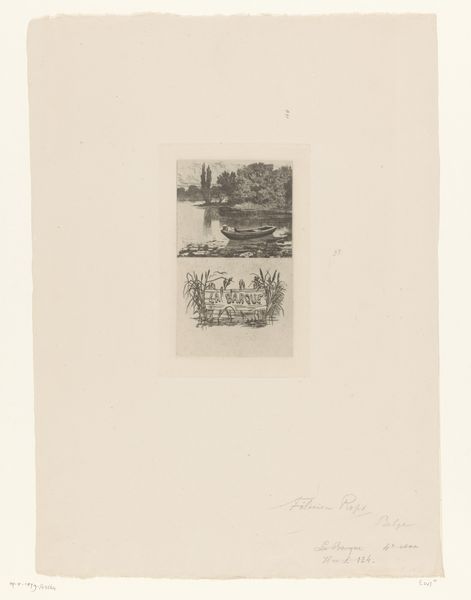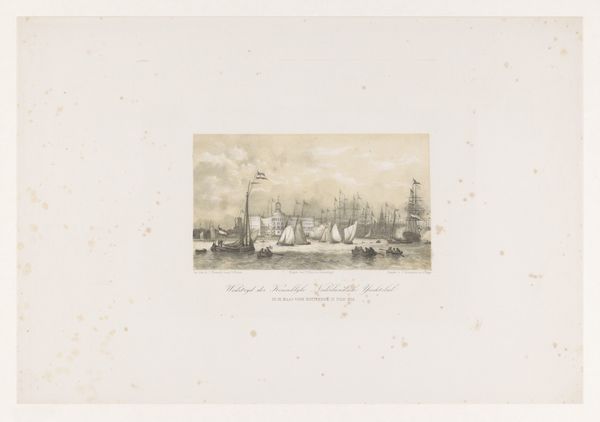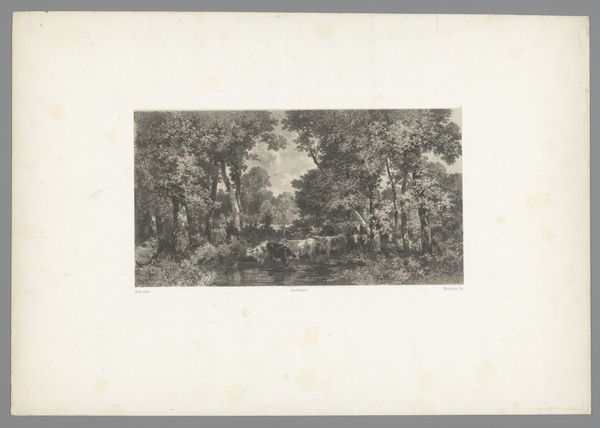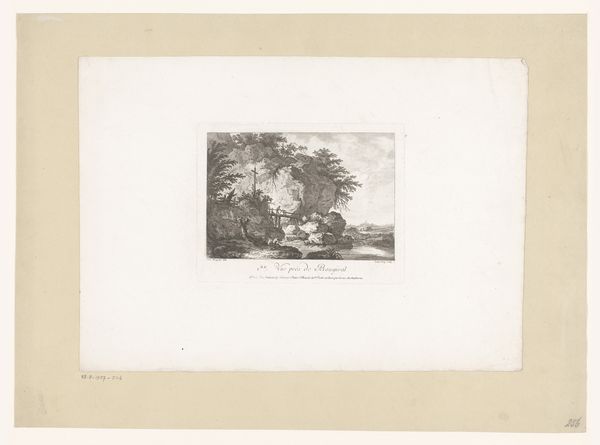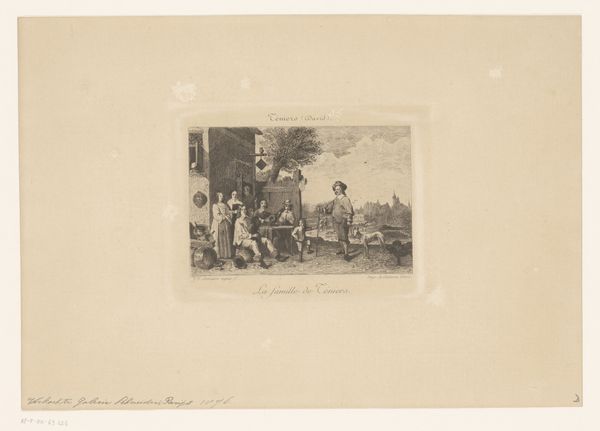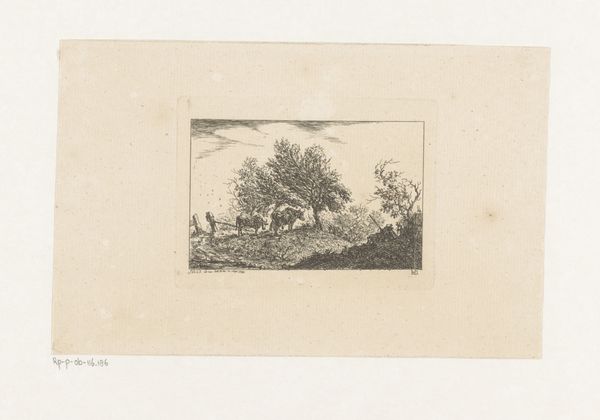
#
dutch-golden-age
# print
#
landscape
#
cityscape
#
realism
Dimensions: height 135 mm, width 167 mm, height 360 mm, width 452 mm
Copyright: Rijks Museum: Open Domain
Curator: Welcome. Before us we have "Herengracht met Huis Bartolotti in Amsterdam" by Willem Hekking, Jr., dating sometime between 1835 and 1904. It’s a print currently residing here at the Rijksmuseum. Editor: My immediate impression is one of serene bourgeois life. The architectural detail is meticulously rendered, evoking a very distinct, almost stolid calm. Curator: Absolutely. Hekking's attention to line and form is quite striking. Note how the receding planes of the buildings are built up by almost uniform strokes. It creates a measured visual rhythm, right? Editor: Yes, and the building in the center. It evokes a clear symbolism. It immediately conjures notions of Dutch prosperity and the mercantile class that characterized Amsterdam's Golden Age. Look at its prominent position in the composition, dominating the street's visual space. Curator: Precisely. And observe how Hekking utilizes light and shadow to emphasize specific architectural elements. The shadows cast by the trees in particular almost anchor that imposing central building. Editor: And there's the reflection in the canal waters which amplifies that architectural image. It is this doubling that further speaks to Amsterdam’s legacy as a place of reflection – quite literally mirrored here, a reflection of itself. A visual and symbolic marker for that self-awareness. Curator: Good point. And from a structuralist perspective, this mirroring is echoed by a tripartite vertical axis: sky, architecture, water, each given essentially equal weighting to emphasize balance in this symbolic world. Editor: A stability that carries strong emotional weight, conveying civic pride and enduring values, don't you think? It resonates with an era of prosperity and trade. Curator: True. While not necessarily groundbreaking from a compositional perspective, the internal coherence here is, however, very clear to perceive and admire, especially within the larger context of 19th century cityscape printmaking. Editor: I agree. Seeing how he represents the cultural narratives and the way this neighborhood played its symbolic role in representing a nation’s aspirations makes me see more beyond just aesthetic features. It also serves as a window onto a specific historical mindset, and is not just simply ink and paper.
Comments
No comments
Be the first to comment and join the conversation on the ultimate creative platform.
